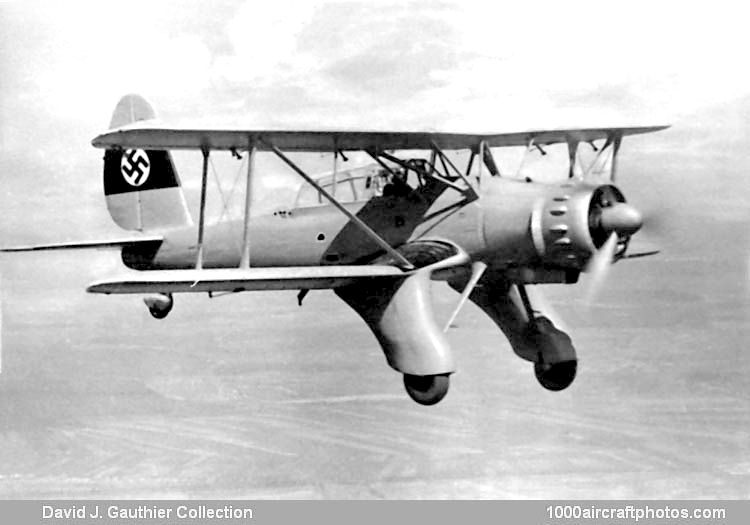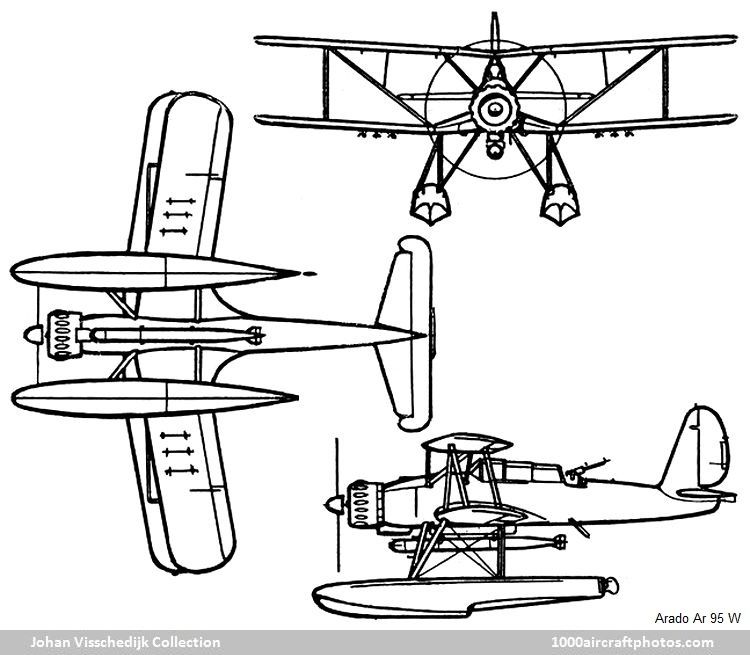DAVID J. GAUTHIER MEMORIAL COLLECTION
No. 12554. Arado Ar 95 V3 (D-ODGY c/n 948)
No. 12554. Arado Ar 95 V4
09/30/2014. Remarks by
Johan Visschedijk: "Although not ordered by the German forces, the Ar 95 saw service with the Luftwaffe in small numbers by virtue of the war preventing the dispatch of certain export orders. The aircraft was designed in 1935 by Dipl.-Ing. W. Blume as a twin-float two-seat biplane for reconnaissance, patrol and light attack duties.
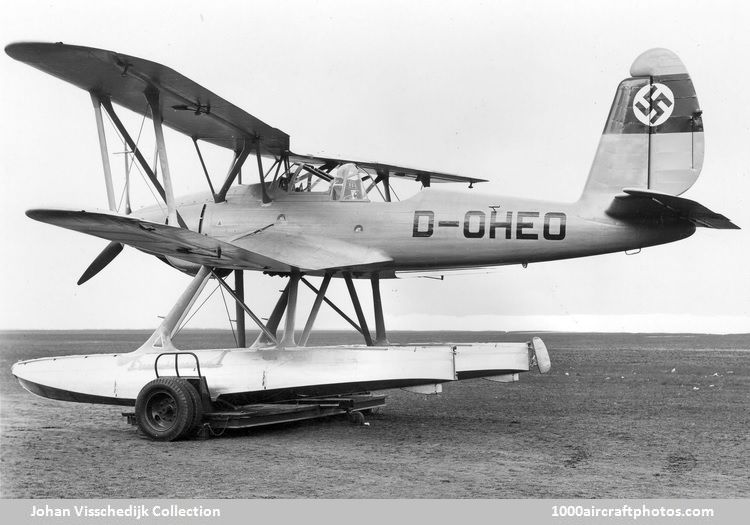
Ar 95 V1 (D-OHEO) (
Johan Visschedijk Collection)
The first prototype, Ar 95 V1 (D-OHEO c/n 946), was powered by a 690 hp Junkers Jumo 210 twelve-cylinder liquid-cooled inverted V-engine and flew in 1936. The second prototype, Ar 95 V2 (D-OLUO c/n 947), was powered by an 880 hp BMW 132 Dc nine-cylinder radial engine. These aircraft competed with the two prototypes of the Focke-Wulf Fw 62 which were of similar configuration but were both powered by BMW radial engines, the Fw 62 V2 having a central main float and two outrigger floats. The radial-engined Ar 95 V1 appears to have emerged from the trials as the most promising and six aircraft of this type were sent for trials with the Condor Legion in August 1938 in that universal testing ground, the Spanish Civil War. This trial batch of Ar 95s was probably made up of prototype and pre-production aircraft.
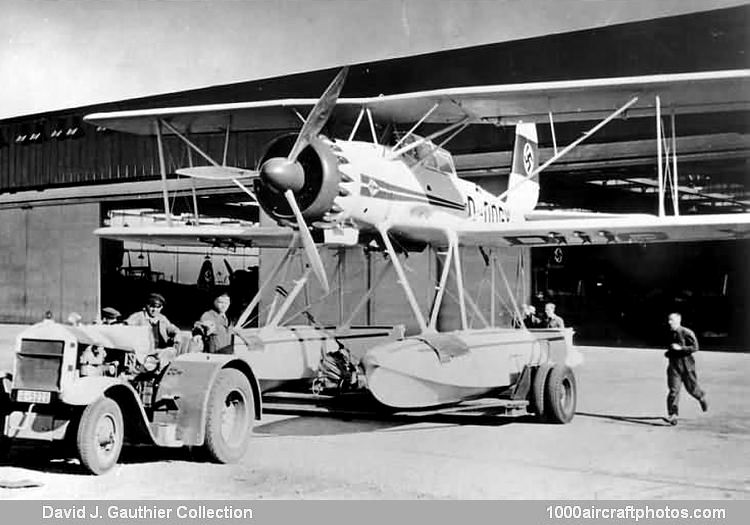
Ar 95 V3 (D-ODGY)
The production prototype Ar 95 V3 (D-ODGY c/n 948), had a long canopy over both cockpits, with the aft end left open for the gunner. Armament comprised a 0.311 in (7.9 mm) machine gun fixed to fire forward and a similar weapon for the rear cockpit, and a 1,544 lb (700 kg) torpedo or various bomb loads could also be carried. All-metal construction was used and the single-step floats were braced to the lower wings and the fuselage. The parallel-chord wings had slightly positive stagger and a 6° sweepback, the lower wing having its inboard sections increased in chord and thickness, while for the upper wing, braced above the fuselage, the reverse was true.
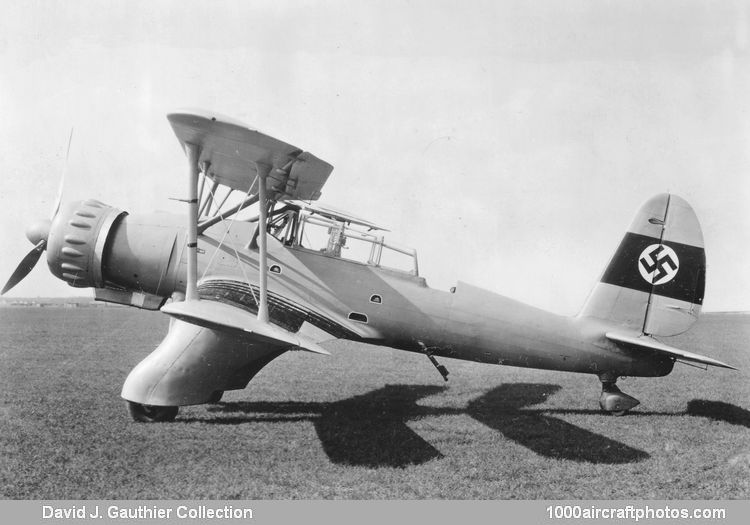
Ar 95 V4, APS No. 766
The fourth prototype, Ar 95 V4 (above and on top of the page) had a non-retractable land landing gear with trouser fairings around the main legs and a fairing over the tail wheel, this became the prototype for the proposed Ar 95 B. During testing, all four prototypes showed much lower predetermined characteristics. When it became clear that the Ar 95 would not be ordered for the German forces, the type was offered for export in two forms, as the Ar 95 W with floats or the Ar 95 L with the fixed land landing gear.
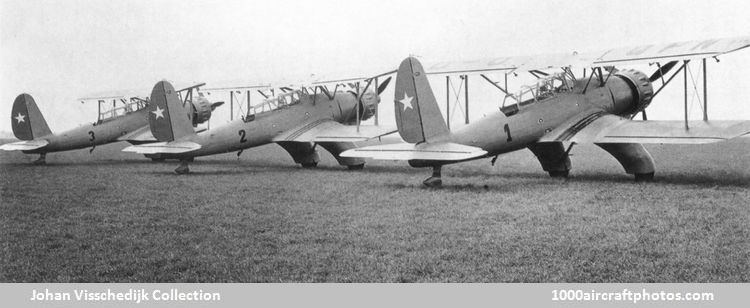
Ar 95 L Chilean AF (
"1",
"2",
"3") (
Johan Visschedijk Collection)
In 1938, Turkey ordered the Ar 95 W and Chile ordered three Ar 95 Ls and three Ar 95 Ws, but only the six Chilean aircraft were delivered to the Chilean AF before the outbreak of the WW II. The floatplanes intended for Turkey were then completed and put into Luftwaffe service with the designation Ar 95 A.
In Luftwaffe service, the Ar 95 A was used chiefly for training purposes in the SAGr (Seeaufklärungsgruppen, Sea Reconnaissance Groups), the units concerned originally being 2./SAGr 125 and all three Staffeln (Squadrons) of SAGr 126. By early 1943 the Ar 95s were transferred to SAGr 127, but from the end of that year until late 1944 only 1./SAGr 127 operated the type."
Created September 30, 2014
